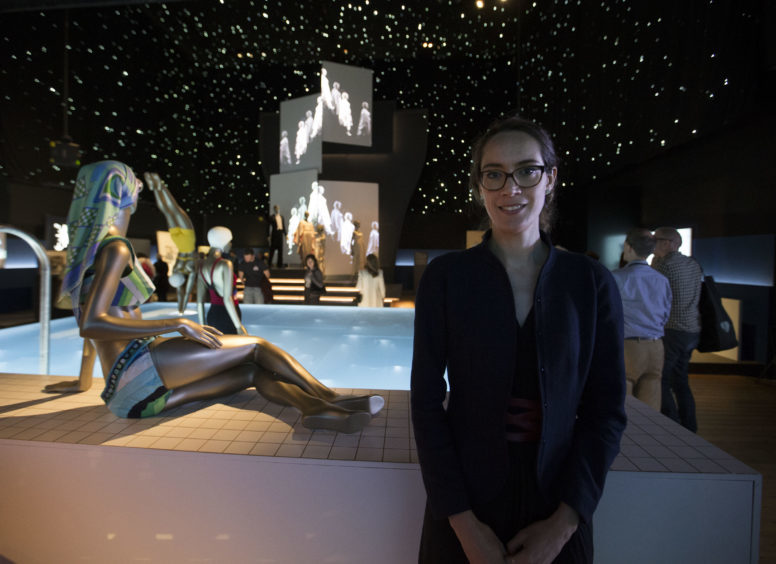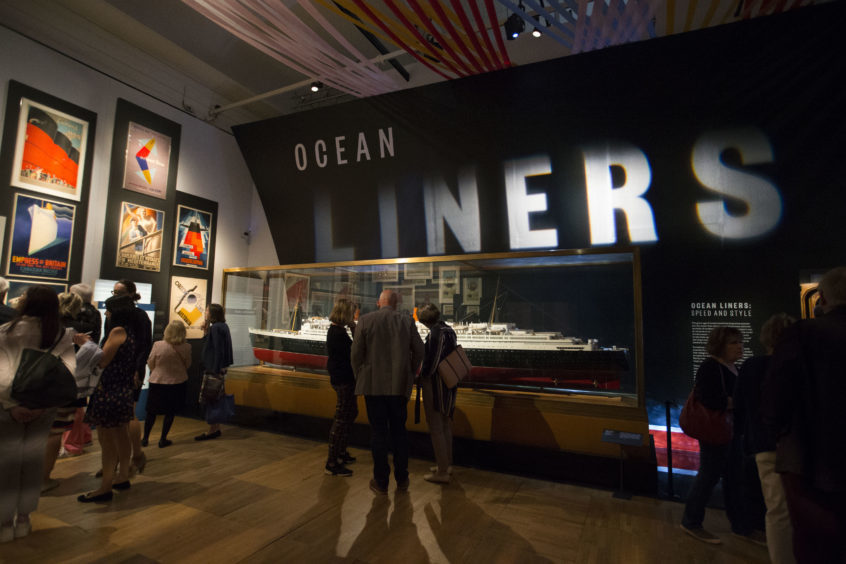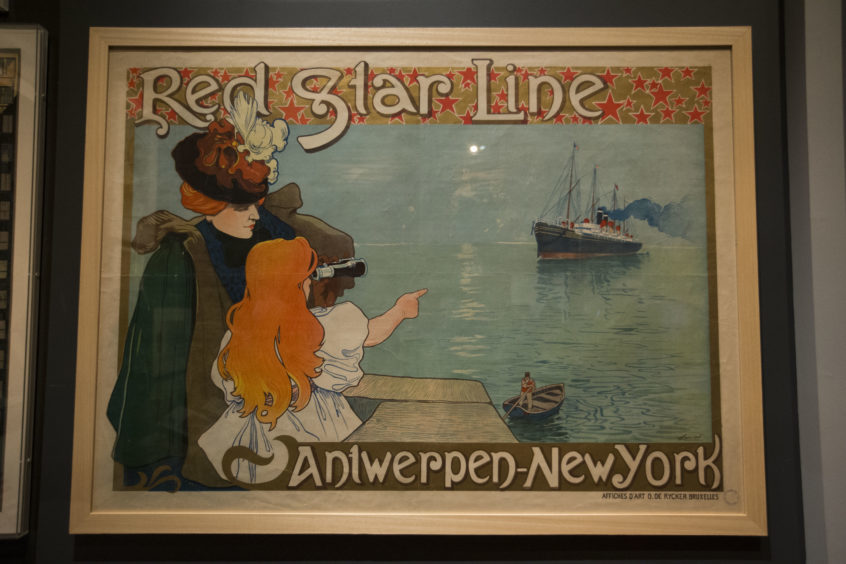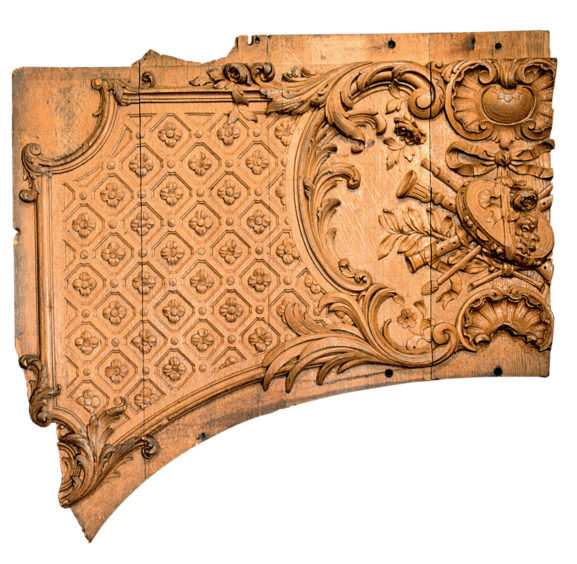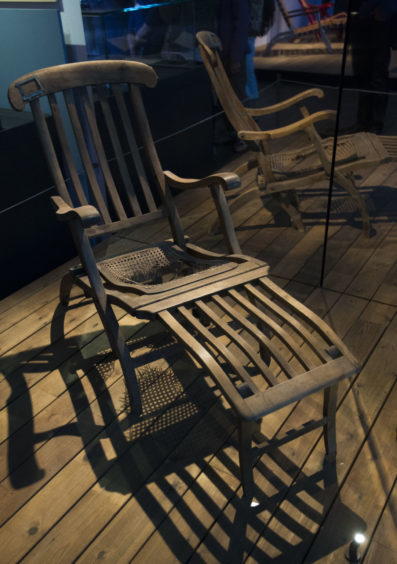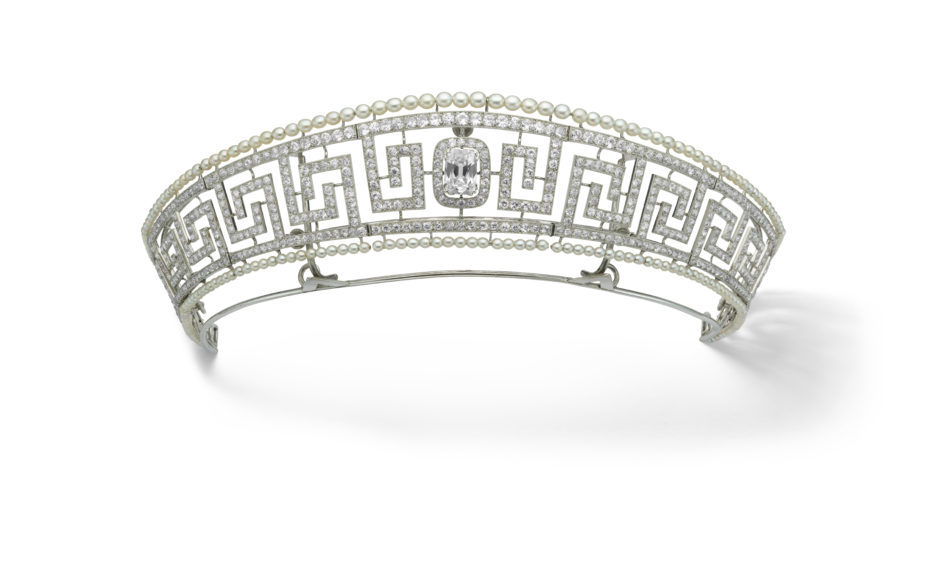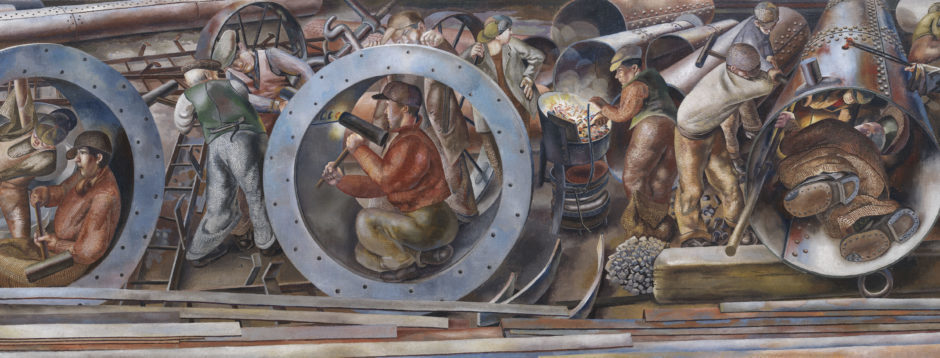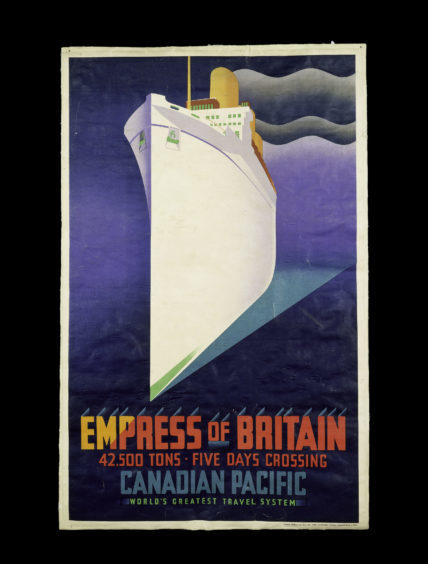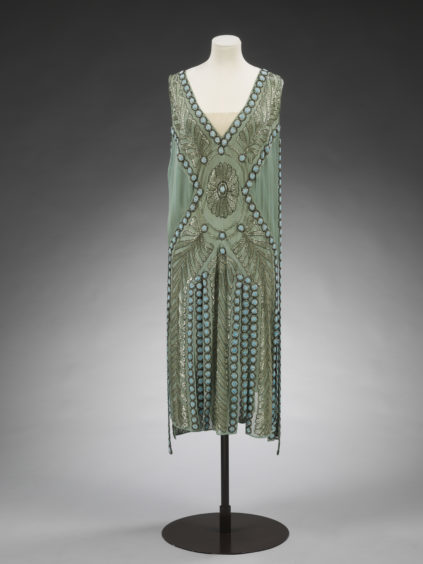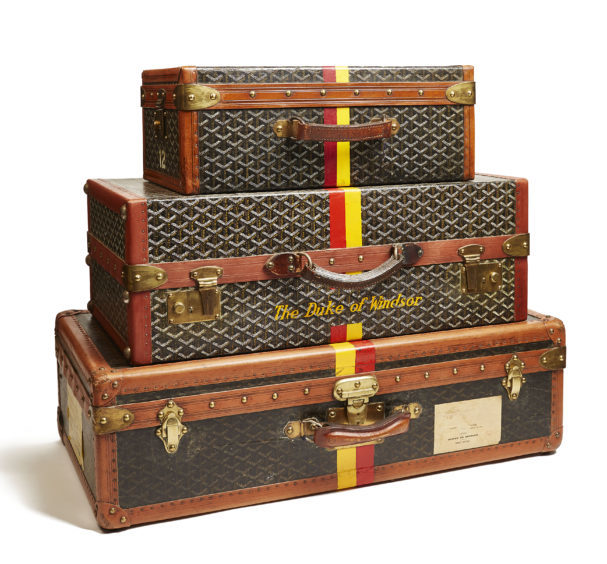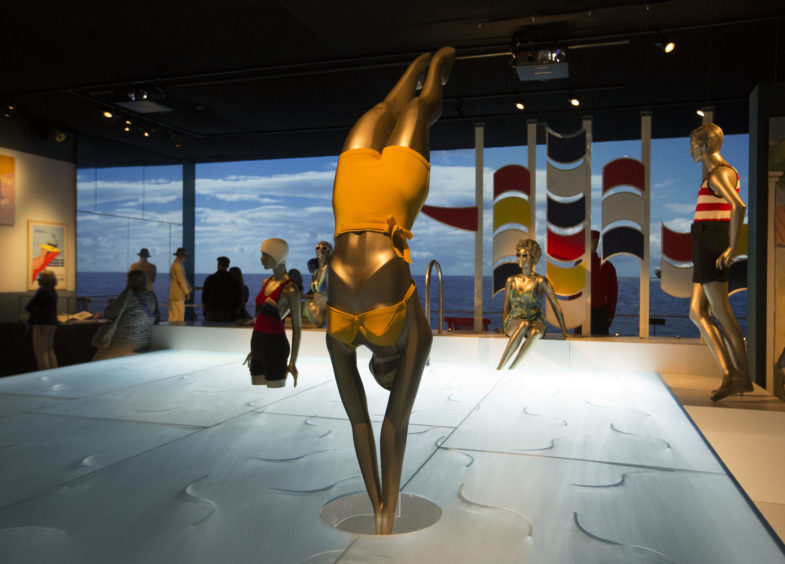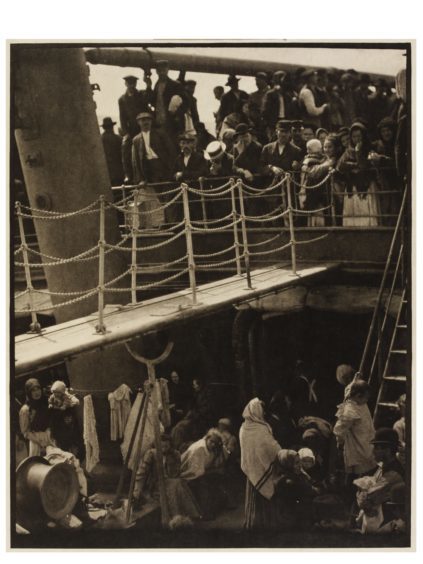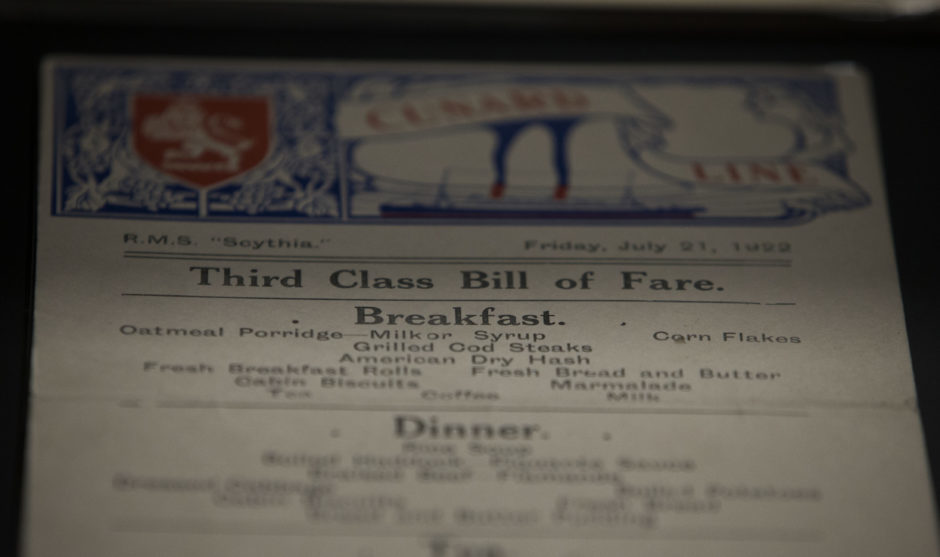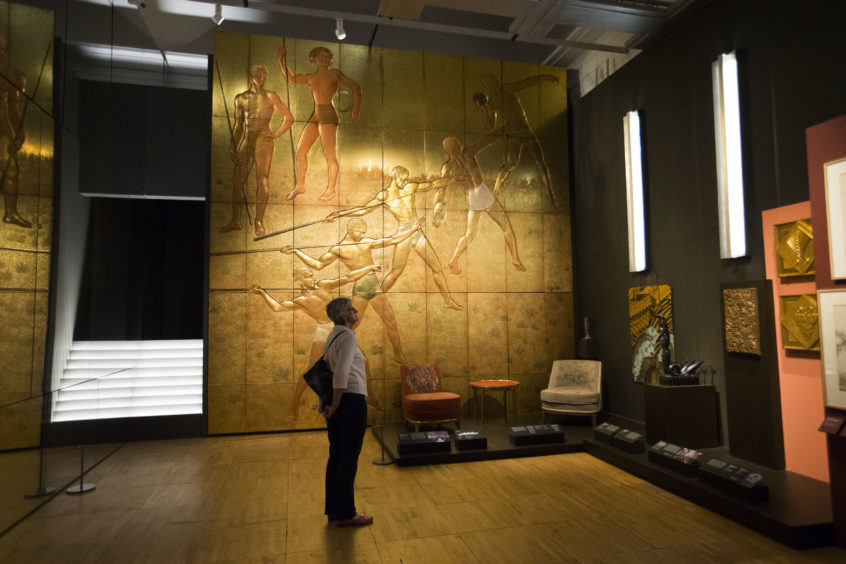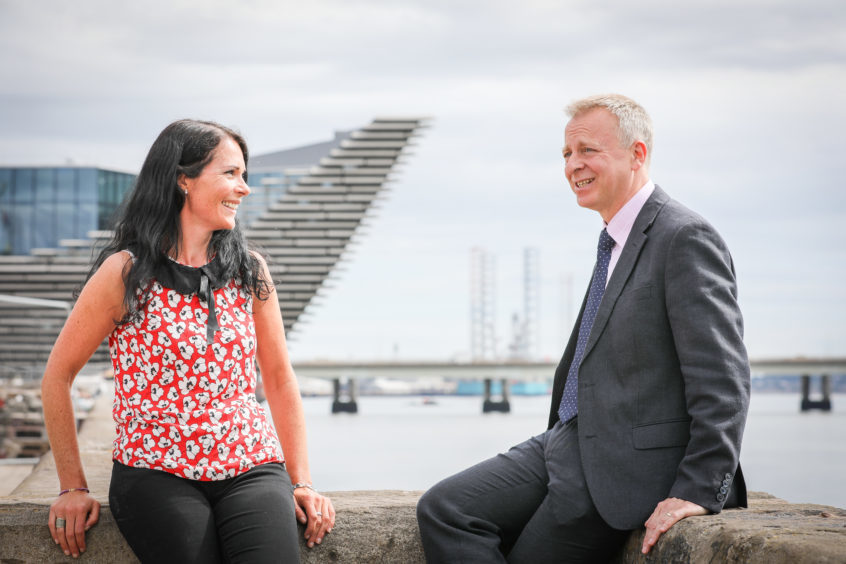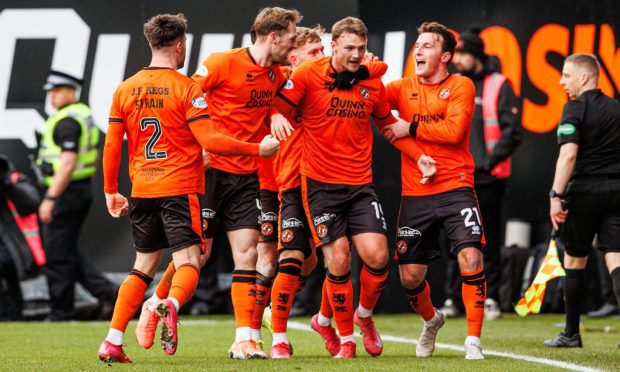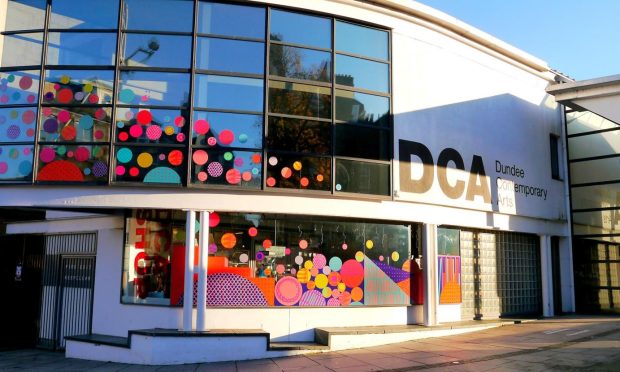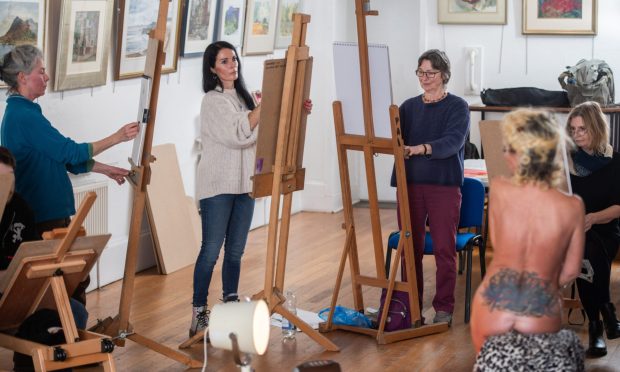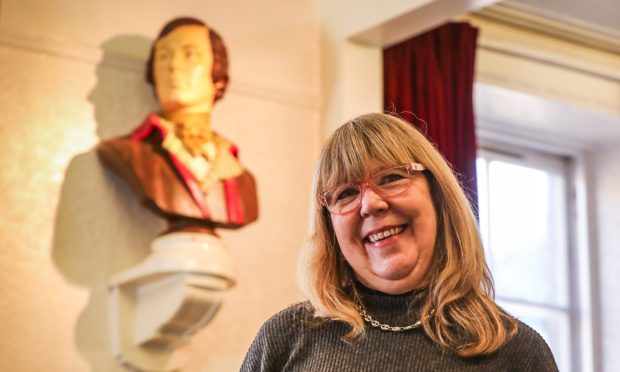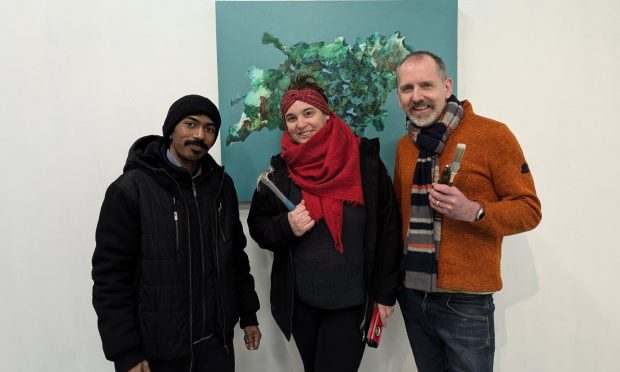V&A Dundee opens on September 15! Gayle Ritchie gets a sneak preview of the fantastic opening show, Ocean Liners: Speed and Style
The shriek of whirling seagulls. The lilt and crash of the rolling sea swell. The loud, bassy booming of a horn. The deep rumble of the engine…
Close your eyes and you might imagine you’re cresting the ocean waves from the comfort of a luxury liner. Open them and you’ll likely imagine that, too.
Inside V&A Dundee’s inaugural exhibition – Ocean Liners: Speed and Style – you truly feel as if you’re cruising along on one of these giant, floating palaces.
Ambling through the exhibition, which ultimately tells the story of life on board an ocean liner through a series of nautical scenarios and fantastic showcase of more than 250 objects, it’s a veritable feast for the senses.
Mannequins strut, pose and recline around a pool (the yellow bikini-clad diver is particularly striking), decorative wooden panels loom large, and music from the 1920s swirls around you.
It’s a buoyant and evocative return to an age of glitz and glamour – a journey through the design stories of the world’s greatest ocean liners, including the Titanic, Normandie, Queen Mary and Canberra, exploring how these impressive vessels helped shape the modern world.
Housed in V&A Dundee’s temporary exhibition gallery space – the largest of its type in Scotland – Ocean Liners includes paintings, sculptures, interiors, ship and engine models, wall panels, furniture, fashion, textiles, photos, posters, films and more.
Wandering round the vast space, you can’t fail to be blown away, as much by the sheer size of it as by individual exhibits.
Ahead of the exhibition opening at V&A Dundee on Saturday, I spent an afternoon at the museum’s sister institution in London, where the show was running until June.
My guide for my tour was Anna Ferrari, the project curator for the exhibition.
“The exhibition tells the story of the design of liners from several perspectives,” she told me.
“The first liners, built in the mid 19th century, were designed to carry immigrants. This changed so they targeted wealthier passengers and came to be regarded as luxury modes of transport and indeed, glamour and romance are an important part of the story.
“The exhibition looks at everything from fashionable interiors to ground-breaking engineering and lifestyles on board and explores Scotland’s important role in the design and development of ocean liners.”
Wandering round, I’m drawn to exhibits salvaged from the wreck of the Titanic – a wooden deckchair made in 1912 and a fragment of wooden panelling from a door in the first-class lounge.
The panelling, which boasts carved decorations of musical instruments with Rococo motifs and forms, was found floating on the surface of the Atlantic. It comes from where the Titanic broke in half as it sank on the night of April 14, 1912.
It’s humbling – and somewhat moving – to see both items here, under the V&A spotlight.
Another exhibit which triggers all sorts of emotions is a diamond and pearl Cartier tiara saved from the ship, Lusitania.
It belonged to the wife of Sir Hugh Montagu Allan of the Canadian Allan Line shipping company.
Lady Allan had been travelling with two daughters and two maids on the final voyage of the Lusitania when it sunk in a German U-boat torpedo attack off the Irish coast on May 7, 1915. Lady Allan escaped with her maids and luggage containing the tiara but tragically, her daughters were among the 1,198 lost.
Then there’s Stanley Spencer’s colossal painting, Riveters. Taken from Spencer’s 1941 series Shipbuilding on the Clyde, it’s a portrait of shipyard life by an artist inspired by the industrial landscape of Port Glasgow.
It’s not an artwork to be simply glanced at. At almost six metres long, it’s striking in its intricacy. Scenes portray workers applying paint, fitting bolts, hammering, pulling heavy loads with ropes, riveting, studying plans and more.
The relevance of the painting? It shows the strict division of labour in shipyards and reflects the highly skilled workforces involved in the construction of liners.
Other artworks which stop me in my tracks include the iconic painting, Paquebot “Paris”, by the leading US Precisionist, Charles Demuth, and the giant lithograph poster advertising the Empress of Britain, a liner operated by Canadian Pacific Railways.
Along with brochures and meticulously crafted ship models, these bold posters were used as marketing tools to promote liners as the height of modernity and luxury. Clearly, they did a fantastic job.
Fashion is hugely celebrated in the exhibition and rightly so. As liners became “floating palaces” modelled on grand hotels, passengers were advised to dress in suitably elegant attire. To commit a fashion faux pas on board would be unforgivable!
Fashion shoots and catwalk shows were often organised on deck and the exhibition showcases a stunning variety of fashion items.
One that stands out is Jeanne Lanvin’s silk Georgette and glass beaded “Salambo” dress – one of the most important flapper dresses in the V&A’s collection.
This belonged to Emilie Grigsby, a wealthy American socialite who travelled between Europe and New York on board the Aquatania, Olympia and Lusitania throughout the 1910s and 20s.
There’s also a Christian Dior suit worn by actress Marlene Dietrich as she arrived in New York on board the Queen Elizabeth in 1950 and the Duke of Windsor’s sumptuous 1940s Goyard luggage.
With the rise of leisure activities during the 1920s and 30s, decks were transformed into areas offering activities from dancing to tennis, boxing, swimming and clay-pigeon shooting.
Thanks to imaginative curatorial and design work, the “pool” scene is animated with a sense of the characters who may have been aboard.
“The combined curatorial and design vision was to tell the story of life on board an ocean liner through a series of nautical scenarios including pool, cabin, deck and bar areas with a show-stopping ‘Grande Descente’” explains Anna.
“That meant using highly individualised mannequins in unique poses that interacted with their surroundings.
“Particularly challenging was the pool scene, featuring a variety of reclining and seated figures and a striking diving mannequin.”
I have to agree – the diving mannequin, sporting a two-piece 1930s yellow wool bathing suit, is a fantastic spectacle.
But the exhibition just keeps on giving and an unmissable highlight is indeed the “Grand Descente”.
A classic design of the 20th century liner, this was a spectacular staircase which first-class passengers descended to make their grand entrance into the dining room in their finest eveningwear.
The exhibition does a fine job of showcasing this theatrical, pseudo-catwalk and brings garments to life with a breathtaking Duchamp-inspired film installation.
Amidst all the glitz and glamour – and there’s a lot of it – there’s The Steerage, a sobering photograph taken by Alfred Stieglitz in 1907.
Hailed as one of the greatest photographs of all time, the scene depicts immigrants returning to their European homelands on the steerage level (the part of a ship providing the cheapest accommodation) of the ship Kaiser Wilhelm II.
It’s overcrowded and conditions are grim. It expertly encapsulates the divide between the rich and the poor.
Other exhibits which explore the class divide are the menus – from the sumptuous offerings of the first class to the third class “bills of fare”. And there’s even a menu for dogs of the rich!
The Torah ark from the synagogue on board the Queen Mary is another highlight and one which bears great historical significance.
In the 1930s, synagogues began catering to increasing numbers of Jewish travellers, many fleeing persecution.
The exhibition also ventures into the engine rooms of these impressive vessels, exploring innovations in engineering that so radically changed the way people travel. So if you find yourself gazing at a curious lump-like object and wondering what it is, the chances are it might be a mould for a turbine or engine.
You really could while away the hours in Ocean Liners and it will be fascinating to see how the Dundee exhibition differs from the London offering.
The settings are world’s apart – the V&A in London is landlocked while V&A Dundee is on the banks of the Tay, in a brand new, iconic building which resembles the prow of a ship jutting out across the water. Seeing and feeling the exhibition next to the water certainly imbues it with a strong sense of relevance.
When I catch up with V&A Dundee director Philip Long, I ask his thoughts on Ocean Liners.
While he says the exhibition is “visually magnificent, awe-inspiring and spectacular…an amazing story about design in the 19th and 20th century in which Scotland played an important part”, he believes the modes of transport themselves “literally opened up people’s horizons and changed people’s views of the world and how they could live in the world”.
And that is surely fitting for a new institution like V&A Dundee which is all about opening up possibilities, broadening horizons, and introducing people to the creativity of this country.
info
Ocean Liners: Speed and Style runs at V&A Dundee until February 2019. Visitors are invited to experience what it would have been like to step on board these “great floating palaces” and discover how ocean liners became one of the most powerful and admired symbols of 20th century modernity. It displays objects never seen before in Europe and reunites objects not seen together since they were on board these spectacular vessels which revolutionised travel. www.vam.ac.uk/dundee
